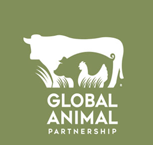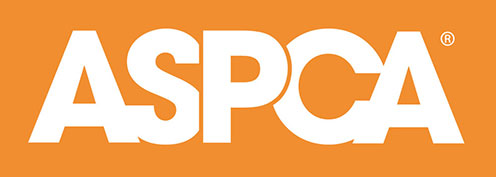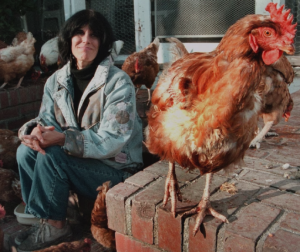
Over the past two years, Global Animal Partnership has helped fund the largest ever research study examining the welfare of different strains of broiler chickens. In this comprehensive study completed at the University of Guelph in Ontario, Canada, scientists compared the welfare of 16 strains of broiler chickens with a range of growth rates. The results of this ground-breaking study will ensure that G.A.P. Animal Welfare Certified producers successfully transition to strains of these “better broilers”, and will enable genetics companies to cross-breed strains to further improve the welfare of all broiler chickens.
Before we answer the question “Why should you care about broiler chickens?”, let’s take a step back and give you a brief history of the rise of broiler chicken production in the US and why chicken breeds are so important.
What is a broiler chicken?
A broiler chicken is a chicken raised for its meat, as opposed to a laying hen, which is raised for its eggs. Both broiler chickens and laying hens have the same ancestors, the red jungle fowl. For millennia, chickens were used primarily for cock fighting and cultural purposes. But by the early 1900s, dual-purpose chickens (eggs and meat) were found in many backyards, with some entrepreneurs selling poultry products from their family farms.
During World War II, interest in ‘meat chicken’ increased due to a shortage of red meat. To maintain the increased chicken consumption, the A&P grocery store in the United States held a competition in the late 1940s called the “Chicken of Tomorrow” to revolutionize the poultry industry. Farmers and breeders competed on who could produce the fastest growing, most efficient chicken. Back then, the White Plymouth Rock chicken narrowly beat out a Red Cornish Cross, but a cross between the two breeds became the chicken of today. Currently, upwards of 90% of the 68 billion chickens produced annually are a strain of Cornish Cross.
In 2020, chicken is now the most common meat consumed because it is high in protein, easy to prepare, and less expensive than other meat products. Chicken meat also is more efficient (in terms of feed and water usage to produce meat) and has a lower environmental footprint (in terms of greenhouse gases) than other common meat products.

What is a breeding company?
Predominantly, the global chicken industry is supplied with chickens from two primary breeding companies, Aviagen and Cobb-Vantress. Both companies have long histories in developing and improving strains through selective breeding of their purebred flocks to meet the needs of consumers. For the past century, their scientists have selected birds for traits such as breast yield, leg strength and meat quality. There are also numerous smaller breeding companies that maintain heritage and rare breeds for backyard flocks.
What has happened to broiler welfare over the past 75 years?
Since the rise of chicken production in the 1940’s and 50’s, there have been significant improvements in veterinary care, nutrition, management, and housing that have halved the mortality rate of broiler chickens raised for food. However, the rapid changes in body weights over the last 50 years have caused major health problems.
While the chickens’ breast muscles are getting larger, their bones and organs are not, leading to a mismatch between the birds’ body weight, leg strength and cardiovascular system. Broilers may develop problems walking, may be unable to perform motivated behaviour, or may die suddenly.
Over the last 25 years, the breeding companies have had success in reducing several major health issues and welfare problems through genetic selection. For example, the number of broilers with bowlegs or knocked knees, referred to as long bone deformities, is now 75% lower than it was two decades ago.
However, more changes are needed. Approximately 25% of broiler chickens have some difficulty walking and 5% of chickens die before they make it to market, primarily due to metabolic disorders or heart and lung conditions. Many of the welfare issues that broiler chickens experience stem from their heavy body weights and/or rapid growth rates.
Broiler chickens: by the numbers
So what can we do to improve welfare?
Welfare can be improved by changing the environment or changing the animal. Since many welfare issues relate to fast growth, farm practices that slow down growth can reduce lameness and mortality and increase activity levels. G.A.P.’s Animal Welfare Certified program has influenced the industry through significant improvements in the animal’s environment. Management practices such as changing the diet (by lowering the amount of protein, for example), lowering the stocking density (the number of chickens housed in a given area), or providing more hours of darkness for the birds to rest help reduce growth rates and improve welfare.
However, while changing farm practices can (and does) improve the welfare of broiler chickens, some issues will persist if the same breeds are used. Most of the changes in broiler growth rates over the past 50 years are due to selective breeding for heavier body weights. Therefore, the biggest improvements to broiler welfare will require changes in genetics, by selecting birds with characteristics that are associated with better welfare. That’s why G.A.P. decided to lead the charge back in 2016 and establish the Better Chicken Project, a collaboration of scientists, breeding companies, chicken producers, buyers, and animal welfare advocates working together with a common purpose: to establish a research-based framework for solving the broiler chicken breed issue.
How can we select a “better broiler”?
Much like how there are different breeds of dogs (e.g., Labrador Retriever and Standard Poodle), and different strains or lines of those breeds (e.g., American Lab and English Lab) that may differ in size, color and temperament, there are different breeds and strains of broiler chickens. The majority of broiler chickens descend from a cross of the same two breeds, Cornish and White Rock chickens, but there are numerous strains that differ from each other in traits such as feather color, growth rate, and temperament.
Breeding companies have used crossbreeding of the various strains to grow larger birds that eat less to meet the changing and growing consumer demand for chicken meat. They have also crossbred strains to exclude traits such as bow leggedness to improve the welfare of conventional broiler chickens. However, as mentioned earlier, there are still major welfare issues in broiler production which impact billions of chickens produced annually.
Scientists have studied the behavior and welfare of broiler strains with different growth rates to understand if using strains with slower growth rates will improve welfare. For the most part, these studies have found better welfare outcomes for the slower growing strains, but they have focused on only a small number of strains, strains with very different growth rates, or strains reared with outdoor (free-range) access.
As the global poultry industries consider the implications of using slower growing strains of chickens, there was a need for a comprehensive, multidisciplinary examination of broiler chickens with a wide range of strains differing in growth rates. And that is why G.A.P. helped support the comprehensive research study fielded by the University of Guelph in Ontario, Canada, to study the welfare, behavior, production, anatomy and physiology of 16 strains of broiler chickens to find a better broiler. If you’d like to view the summary research report, you can find it here.
Ready to learn more? Stay tuned for our next installment: What is a “slow growing” chicken?












